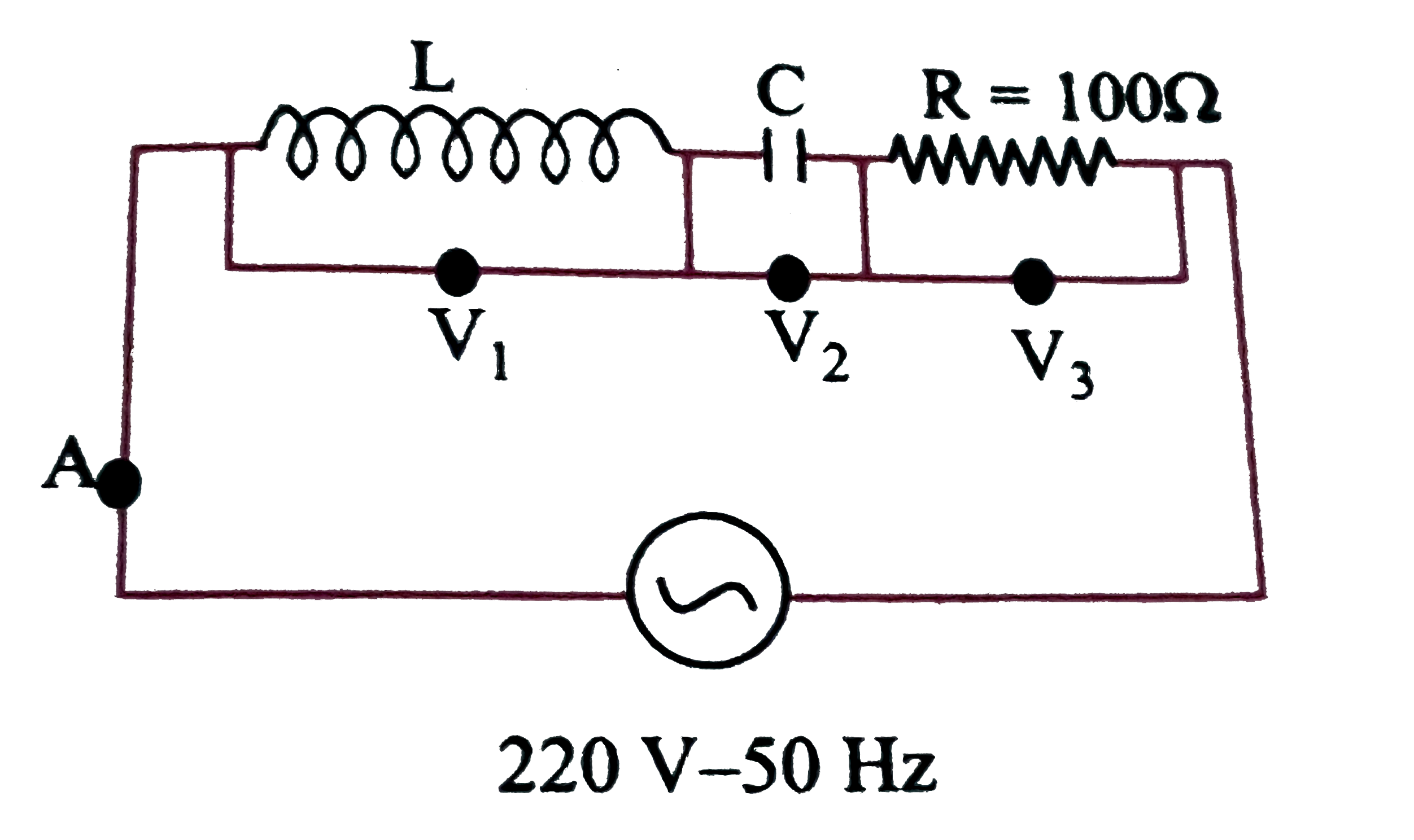चित्र IV.40 देखें और Vout/Vs निकालें जब ωकम हो।

The correct Answer is:1
क्योंकि Vout=VC=IωC=VsωCZ,इसलिए
VoutVs=1ωC√R2+(ωL−1/ωC)2
जब ωकम हो , तो VoutVs=1ωC√(1/ωC)2=ωCωC=1
Topper's Solved these Questions
- प्रत्यावर्ती धाराएँ BOOK - GRB PUBLICATION HINDICHAPTER - प्रत्यावर्ती धाराएँ EXERCISE - सत्य या असत्य
24 Videos
- प्रत्यावर्ती धाराएँ BOOK - GRB PUBLICATION HINDICHAPTER - प्रत्यावर्ती धाराएँ EXERCISE - रिक्त स्थान भरना
15 Videos
- प्रत्यावर्ती धाराएँ BOOK - GRB PUBLICATION HINDICHAPTER - प्रत्यावर्ती धाराएँ EXERCISE - कथन-कारण-आधारित प्रश्न
15 Videos
- प्रकाशिक यन्त्रBOOK - GRB PUBLICATION HINDICHAPTER - प्रकाशिक यन्त्रEXERCISE - NCERT पाठ्यपुस्तक अभ्यास
8 Videos
- विद्युत परिपथ , विद्युत ऊर्जा और शक्ति BOOK - GRB PUBLICATION HINDICHAPTER - विद्युत परिपथ , विद्युत ऊर्जा और शक्ति EXERCISE - प्रतियोगिता सामग्री ( रिक्त स्थान भरना )
15 Videos
Similar Questions
किसी परिपथ में प्रेरित विद्युत वाहक बल, इसमें से चुम्बकीय फ्लक्स के अनुक्रमानुपाती है।
View Solutionएक शुद्ध प्रेरकत्व में क्षयित हुई औसत शक्ति.........।
View SolutionA: श्रेणीक्रम LCR परिपथ में अनुनाद हो सकता है।
R: अनुनाद होता है यदि प्रेरणिक (inductive) और धारिता प्रतिघात, समान और विपरीत हों।
View Solutionएक छोटे दूरदर्शक के अभिदृश्यक लेन्स की फोकस दुरी 144cm , और नेत्रिका की 6.0cm है। दूरदर्शक की आवर्धन क्षमता क्या है ? अभिदृश्यक और नेत्रिका के बीच कितनी दुरी है ?
View Solutionएक H-परमाणु में एक इलेक्ट्रॉन नाभिक के इर्द-गिर्द 6.6×1015 rps लगाता है। तुल्य धारा ..............A है।
View SolutionIn the R_(1) = 10 Omega ,R_(2) = 20 Omega, R_(3) = 40 Omega R_(4) = 80 Omega and V_(A) = 5V,V_(B) = 10V,V_(c) = 20V,V_(D) = 15V The current in the resistance R_(1) will be
View Solution
Observers O1andO2 are at rest and the wall is moving with velocity V_(w) Cart is moving with constant velocity V_(s) towards wall. The source of sound is in the cart, the original frequency of the wave is f. sound has velocity C w.r.t. ground (medium is stationary) Then match the column -I with column-II
Column-IColumn-II(A)Wavelength received byO1directly from cart(P)(C−VwC+Vw)(C−Vs)f(B)Wavelength received byO2directly from cart(Q)C+Vsf(C)Wavelength received by driver of the cartafter reflection from wall(R)(C+VwC−Vw)(C−Vs)f(D)Wavelength received byreflection from wallO1after(S)C−Vsf(T)None of these
View SolutionFind out following (i) V_(A)-V_(B) (ii) V_(B)-V_(C) (iii) V_(C)-V_(A) (iv) V_(D)-V_(C) (v) V_(A)-V_(D) (vi) Arrange the order of potential for points A, B, C and D.
View Solutionदिये गये परिपथ में वोल्ट मीटर V1 और V2 में से प्रत्येक का पाठ्यांक 300 V है। वोल्टमीटर V3 और अमीटर A के पाठ्यांक होंगे-

View SolutionIf V_(g) , V_(w) and V_(d) represent the velocities of light in glass , water and diamond respectively , then
View SolutionIf the boundary of system moves by an infinitesimal amount, the work involved is given by dw=−PextdV
for irreversible process w=−PextΔV (where ΔV=Vf−Vi)
for reversible process Pext=Pint±dP≅Pint
so for reversible isothermal process w=−nRTln.VfVi
2mole of an ideal gas undergoes isothermal compression along three different plaths :
(i) reversible compression from Pi=2 bar and Vi=8L to Pf=20 bar
(ii) a single stage compression against a constant external pressure of 20 bar, and
(iii) a two stage compression consisting initially of compression against a constant external pressure of 10 bar until Pgas=Pext, followed by compression against a constant pressure of 20 bar until Pgas=Pext
Work done on the gas in single stage compression is :
View Solutionq=-w=nRT1n(v_(f)-v_(i)) is for isothermal ………change.
View SolutionIn the diode-based rectifier circuit given below, if V_(s) =V_(m)sin omega t and the diode is ideal, then the average value of V_(L) is
View Solutionयदि हीरे, कांच तथा पानी में प्रकाश की चाल क्रमशः vd,vg तथा vw है तब इन चालों में परस्पर सम्बन्ध लिखिए।
View SolutionA particle executing linear SHM has a maximum velocity of 40cms−1 and a maximum acceleration of 50cms−2. Find is amplitude and the period of oscillaton. Maximum velocity,
View Solution
